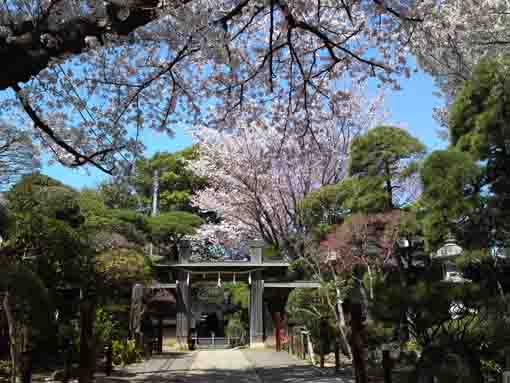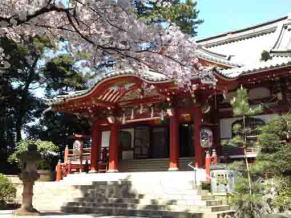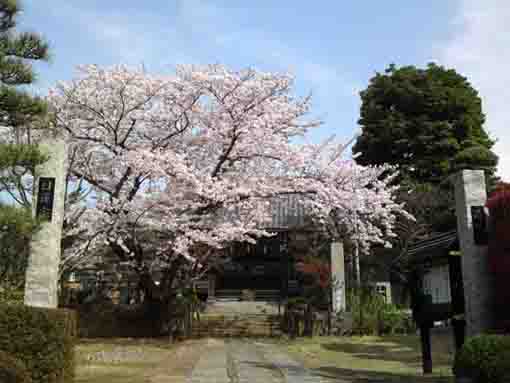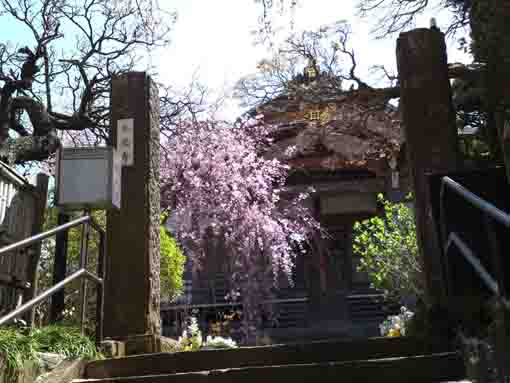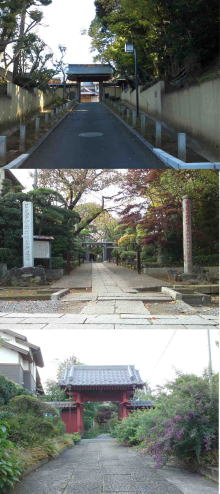Nakayama is in between Narita And Haneda International Airport
<クッキーについての同意並び欧州居住者向けプライバシーポリシー>
中山・下総・散歩道
hokekyoji upon nakayama中山法華経寺
The Intorduction of Nakayama Hokekyoji Temple
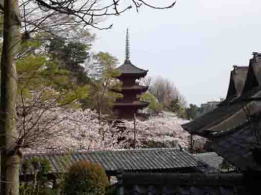
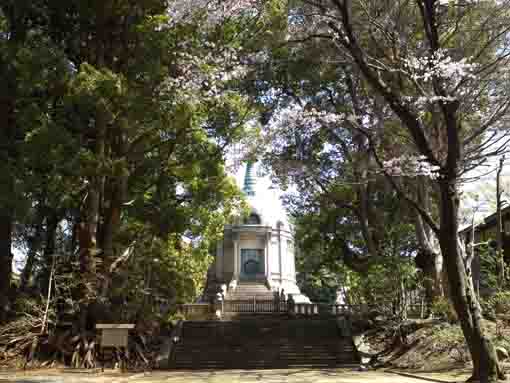
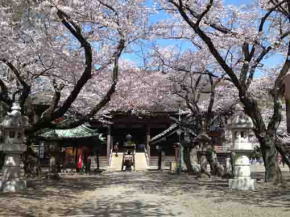
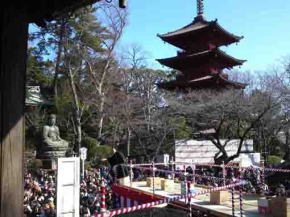
People who come to Nakayama Hokekyoji Temple must be surprised at seeing it and say that they don't believe there is such a huge temple in this residential area. Actually, Nakayama is called a bed town of Tokyo, but it was a crossing point between Sakura Michi (now Route 14) and Kashima Mishi (now Kiorosu Kaido), and it had a small ferry connecting to Edo Bay (Tokyo Bay), so it was a busy town in Edo period.
Going up the approach road to Nakayama Hokekyoji Temple from Shimousa Nakayama Station and crossing Route 14 and the rails of Keisai Line beside Keisei Nakayma Station, there is the main gate of the temple resistered as a municipal cultural asset by Ichikawa City standing on the road. Looking up to the road, there is a Niomon Gate built in late Edo period stading in the blue sky. Behind the gate, some branch temples of Nakayama Hokekyoji Temple and many cherry trees are standing on the both side of about 200 meters long approach road. viewing from the end of the approach road, there is a Goju no To (a five-story pagoda) on the center and Soshido Hall on the left of the site. On the small hill behind Soshido Hall, there are three halls and a gate, the gate is named 'Yonsoku Mon', and the center hall is Hokkedo Hall. The Goju no to, Soshido, Hokkedo Hall and Yonsoku Mon are all Important Cultural Properties designated by National Government. The lelf one is called Setsudo Hall built in Edo period. On the next to the Goju no To, the biggest great Buddha in Chiba prefecture sits. Going on the road between the great Buddha and Soshido Hall and passing through Hoden Mon Gate and a small forest behind it, a white hall like pagoda named Shogyoden Hall built in Taisho Era stands in the woods. In the site and in the branch temples, other many beautiful buildings stored. It is almost like an architectural museum of Buddhism in Japan. Visitors could enjoy seeing the architectures built in Muromachi and Edo period in the temple that it takes 30 minutes from Tokyo Station by train.
Nakayama Hokekyoji Temple looks like a museum having many historical and cultural assets in it. In addition, both fully blooming Sakura in spring and sparkling golden leaves of gingko trees in it are dramatically wonderful.
Why don't you visit Nakayama Hokekyoji Temple?
The Short Summary of Nakayama Hokekyoji Temple
Nakayama Hokekyoji Temple
Nakayama Hokekyoji Temple is one of the five head temples of Nichiren Sect, and it is famous for the founder Nichren visited and achieved preaching first time.In the middle ages, Nakayama was called Yanaka-go, Wakamiya-sho, where Jonin Toki and Noriakira Ota who were bureaucrats of Chiba Clan, Governor of Shimousa Province lived in. Soya lived in Soya and them became believers and strong supporters of Nichren. It was in the Kencho era (from 1249 to 1255) in the middle of Kamakura Period. They built their jibutsu-do halls (the nobility’s private Buddha statue hall), and now Hokekyo-ji Temple is on them. The hall of Toki in Wakamiya was called Hokke-ji Temple, and the hall of Ota in Nakayama was called Honmyou-ji Temple. Early years, both temples were here in Nakayama area and worked hard in missionary. In Tembun 14 (1545) in Sengoku period, those temples were united and entitled Hokekyoji Temple.
Jonin Toki entered into the priesthood of Nichiren Sect so he named Nichijo and he became the first chief abbot of Hokekyoji Temple, the second chief abbot was Nikko, Noriakira Ota’s son, the third chief abbot was Nichiyu, a strong relative of the provincial governor of Shimousa, Tanesada Chiba’s son and Hokekyoji Temple became flourished his era from late Kamakura Period to Nanboku period. Actually, Tanesada was not the governor at that time, but he led a influential group in the clan and had power to control the Chiba clan and Shimousa province. He donated the land in Shimousa(North Chiba, East Tokyo, East Saitama, South Ibaraki) and Hizen (Saga prefecture), so he supported Nichiyu. Nichiyu moved his grand-father’s remains to Hokekyoji Temple to keep long, this showed Hokekyoji Temple would be the uji-dera for Tanesada group in Chiba clan (temple for Chiba clan). Nichiyu laid the foundation for Hokekyoji Temple. In Edo period, Hokekyoji Temle was worshipped as one of the five head temples of Nichiren Sect and disseminated to the common people throughout Japan. The records remained that it controlled 132 branch temples during Kanei period (1624-1644) and 200 branch temples during Tenmei period (1781-1789), and also had 28 tachus (minor temples in the site of main temple). (noted by Jiin Hon-matsu Cho)
Hokekyouji Temple stored ‘Rissho-ankoku-ron’ and ‘Kanjin-honzon-sho’ written by the founder Nichren himself, and many National treasures and Important Cultural properties such as 'Nakayama Hokekyoji Monjo' telling about the life in the east Japan in Kamakura and Muromachi Period and the Buddhist scripts. They had kept by the bureaucrats of Chiba clan, Nichijo at its treasure house and bunches, so Nichijo achieved collecting and storing them with great zeal, this tradition is still being succeeded. Now those treasures are strongly stored in Shogyoden in hokekyoji.
Moreover there were very important historical treasures that they are some documents in the middle age in Japan (Kamakura period) found behind a lot of pieces of papers where Nichiren had wrote scrip by himself. They are called Shihai-monjo; documents behind used paper. These are the documents written at offices in Chiba clan, Jonin Toki provided them for Nichiren to write his letters and masterpieces. Nichiren used their behind, so they remained by luck. They are usually difficult to remain in-real on the history, the slave trade and debt on reality in the middle age in Japan are shown on the documents, so they are very important historical and literal materials in East Japan in Kamakura period.
Nakayama Hokekyoji-Temple is the temple that remains thousands of legends of the founder Nichiren, in addition the temple is famous for not only the head temple, but it stores also thousands of cultural properties and historical properties in the site, Soshi-do, the Goju-no-to, and other buildings and some important scripts written by Nichiren, etc, were stored, it sounds like a museum.
参考資料
中山法華経寺境内案内板(平成十年十二月 市川市教育委員会)より
中山村法華経寺門前助兵衛の慶応元年身延道中記 より
A Map of the landmarks at Hokekyouji-Temple
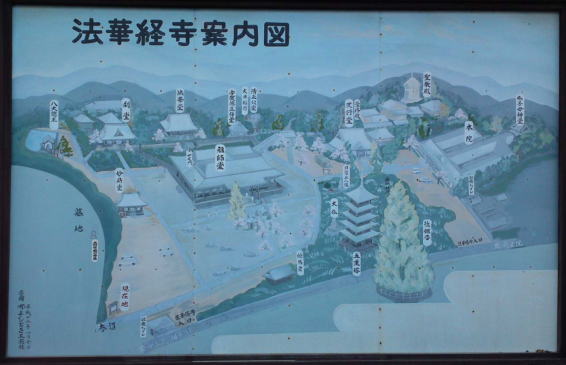
There are a lot of important old buildings in Hokekyo-ji Temple. Hokke-do hall, Yonsoku-mon gate, Soshi-do hall and Gojyu-no-to (the five-story pagoda) are the important cultural properties designated by the National Government. The picture above shows the locations of these buildings in the site.
The Cultural Properties Preserved In Hokekyou-ji Temple
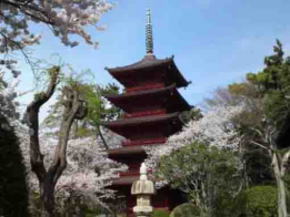
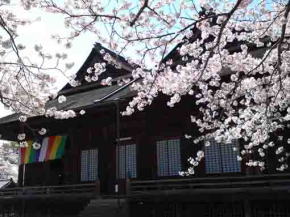
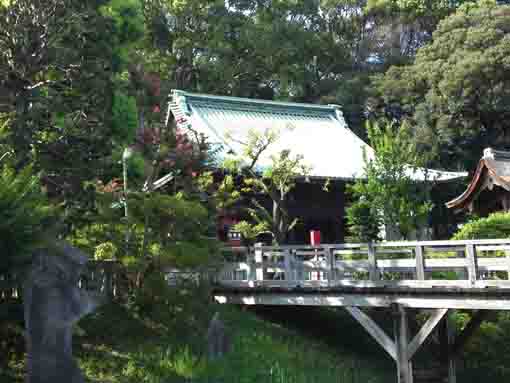
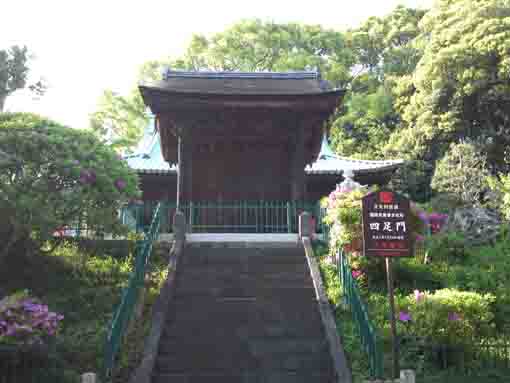
The Listo of the Cultural Properties Preserved In Hokekyou-ji Temple
- Rissyo-ankoku-ron (National Treasure)
- Kanzin-honzon-sho (National Tresure)
- Letters written by Nichiren (Nationally Important Cultural Property)
- Nakayama Hokekyoji Monjo (Nationally Important Cultural Property)
- The portraits of the 16 Arhats (Nationally Important Cultural Property)
- The Five Story Pagoda (Nationally Important Cultural Property)
- Hokke-do (Nationally Important Cultural Property)
- Hokekyo-ji Yonsoku-mon (Nationally Important Cultural Property)
- Hokekyo-ji Soshi-do (Nationally Important Cultural Property)
- The Black Gate and Hengaku (Municipally Tangible Cultral Property)
- The Honami Family's tomb remained separated ashes
- Koetsu Honami's tomb remaind separated his ashes
- The framed calligraphy written by Koetsu Honami
- The Great Budha in Nakayama Hokekyoji Temple
- The wooden statues of Shaka Nyorai and seated Taho Nyorai
Slide Show Movies of Sakura Blossoms in Nakayama Hokekyoji Temple
The Photo Movie of Cherry Blossoms in Nakayama Hokekyoji in 2020
The Photo Movie of Cherry Blossoms in Nakayama Hokekyoji in 2019
Let's enjoy viewing Sakura Blossoms in Nakayama Hokekyoji!
Sightseeing in Nakayama Shomousa With Mangas
Sightseeing in Nakayama Hokekyoji Temple with Manga (Long Version)
Sightseeing in Nakayama Hokekyoji Temple with Manga (Short Version)
The Location and Access to Nakayama Hokekyoji Temple
Nakayama Hokekyouji Temple
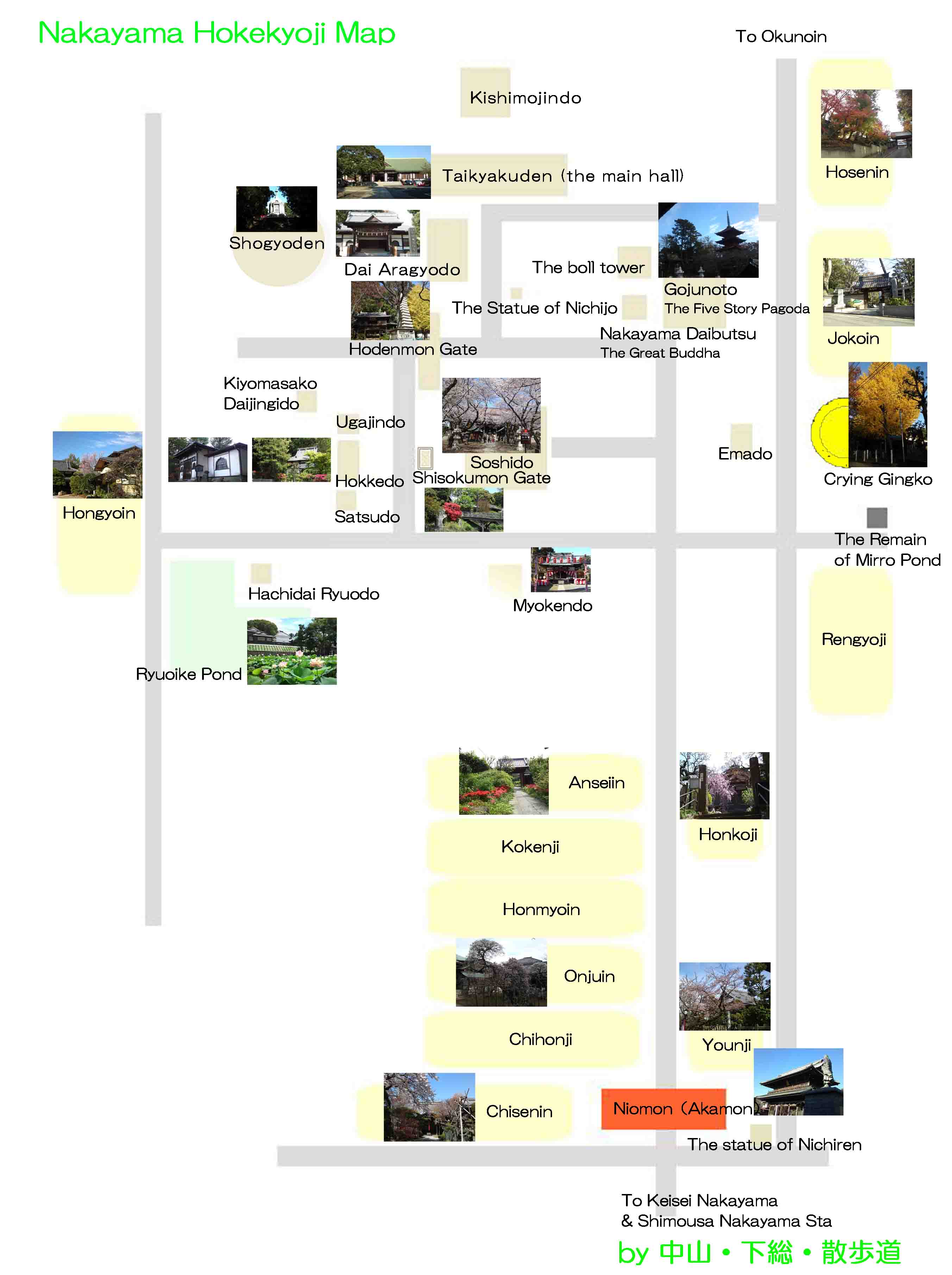
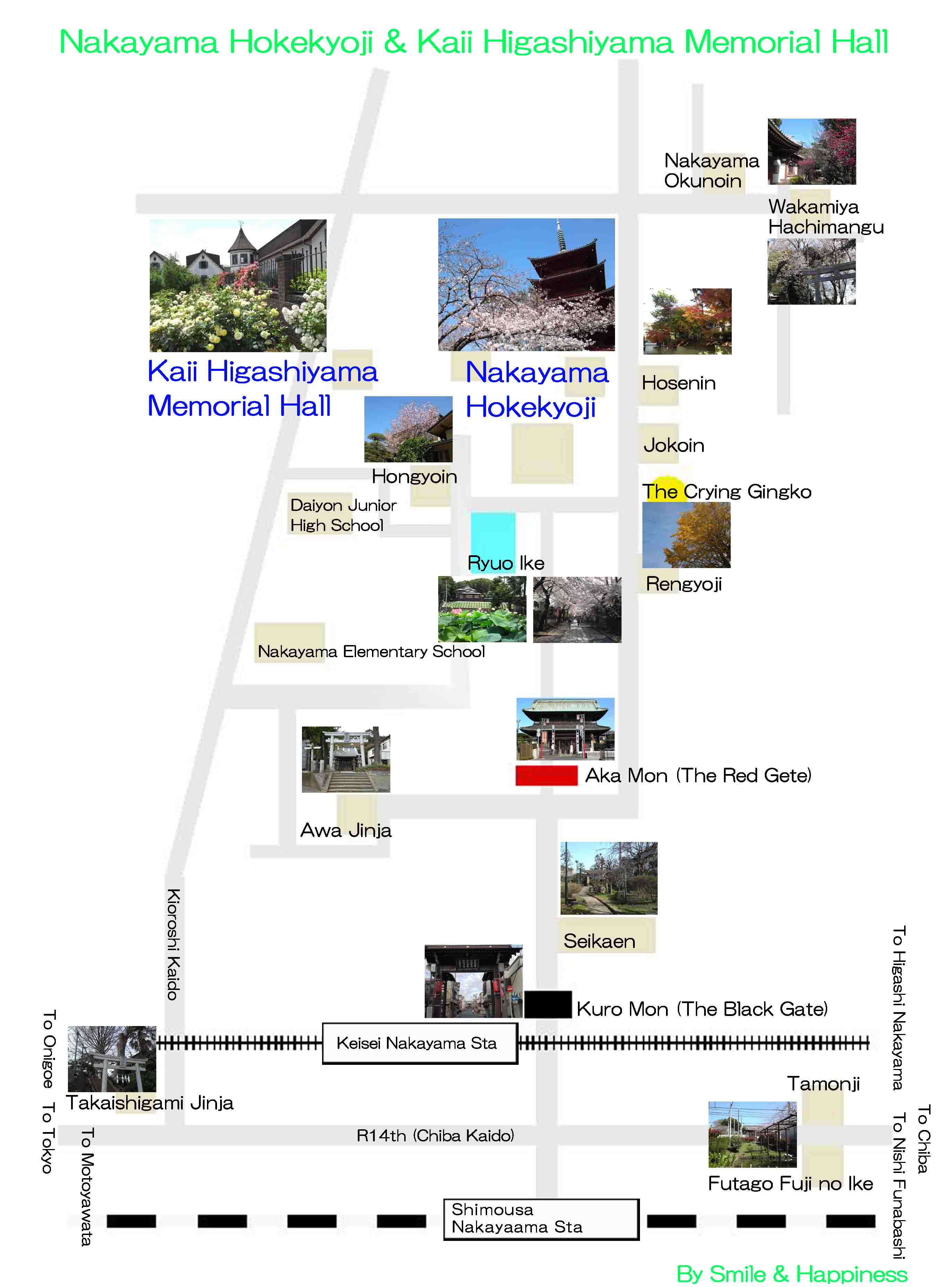
The map near Nakayama Hokekyoji and Kaii Higashiyama Memorial Hall
PDF of the map near Hokekyoji and Kaii Higashiyama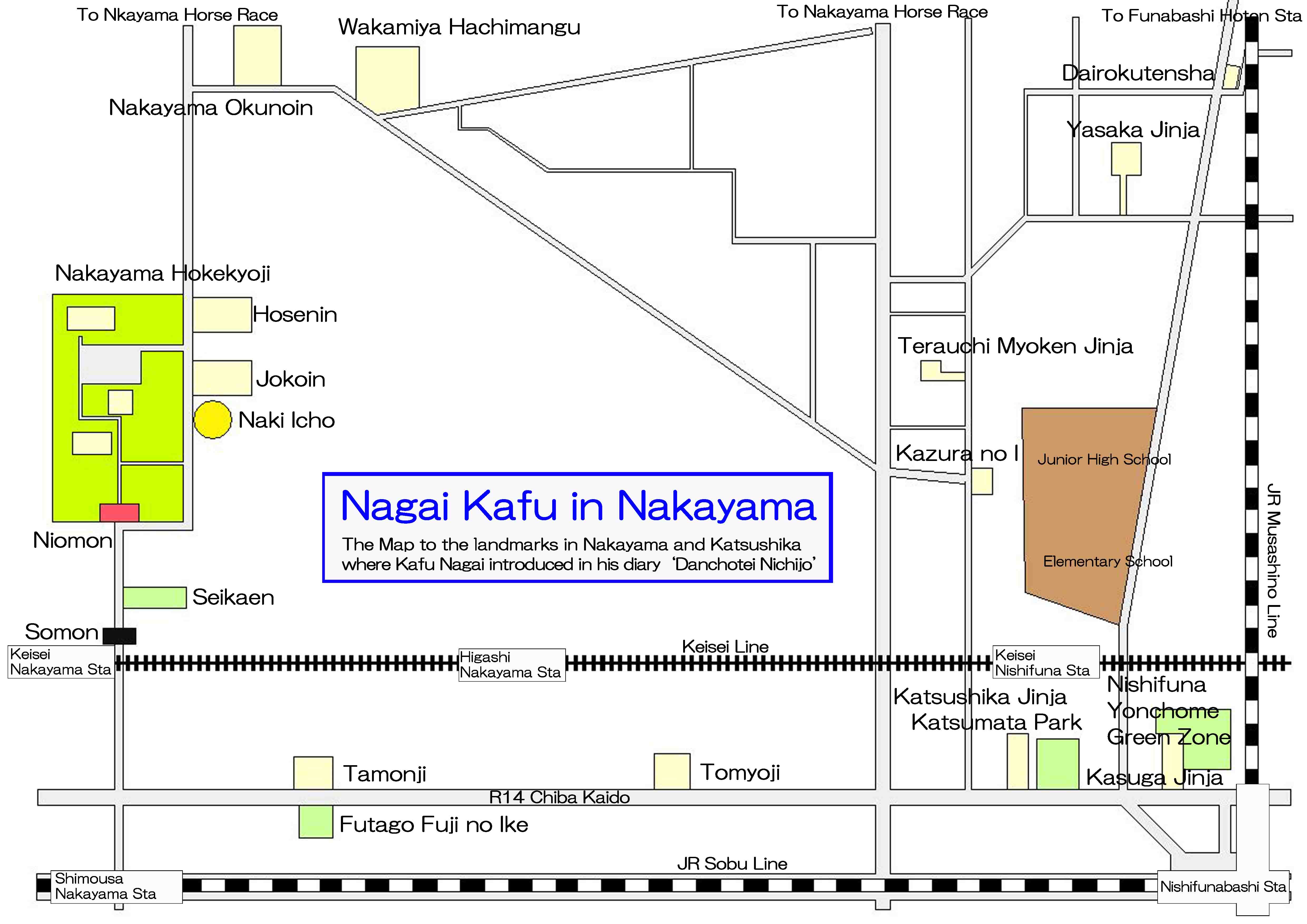
The map to the landmarks where Kafu Nagai introduced in his book
PDF of the map of the noted spots where Kafu Nagai visited2-10-1 Nakayama, Ichikawa-shi, Chiba-pref, Japan
- Hokekyouji Temple has a great accessibility from both Narita and Haneda International Airport.
- From Narita International Airport, take Keisei-line and get off Keisei-Nakayama Sta, take minimally 40 minutes from Narita Airport.. And also take JR Sobu-express line, transfer the line at Funabashi to Sobu-Local line, get off Shimousa-Nakayama Sta.
- From Haneda International Airport, take Keikyu-line bound to Narita, and get off Keisei-Nakayama Sta.
- From Tokyo Sta, take Sobu-Express line bound to Chiba or Narita, transfer the line to Sobu-Local line bound to Chiba, Tsudanuma, or Nishi-Funabashi at Ichikawa Sta, get off Shimousa-Nakayama Sta.
- From Akihabara Sta, take Sobu line bound to Chiba, get off Shimousa-Nakayama Sta.
- Take 1 minute walk from Keisei-Nakayama Sta, and take 5 minutes walk from Shimousa-Nakayama Sta.
The Wonderful Sights In Nakayama Hokekyoji Temple
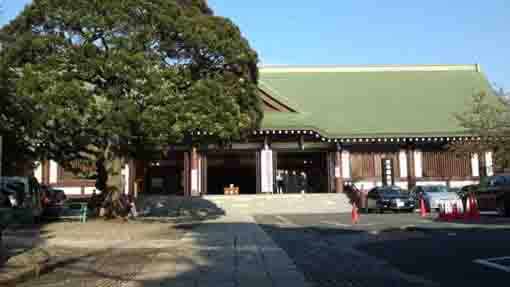
Honin(Taikyakuden)・Kishibojindo(Sonshindo)
Takikyakuden is the main hall of Hokekyoji and it has the business office and Kishibojindo Hall dedicated to the goddess of children on the end of the long corrido of the main hall.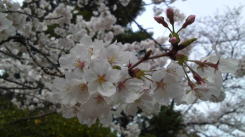
The Four Seasons In Hokekyoji
In spring, there is millions of cherry blossoms in Hokekyoji and in summer, lotus blooms on ryuo-ike pond. In fall, there are beautiful colored leaves. Every season, visitors could enjoy seeing the sights.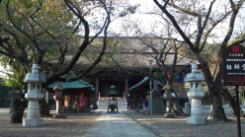
Soshido(Daido), the nationally important cultural property
It is characterized the twin hip-and-gable roof structure (hiyoku-irimoya-style), and hengaku written by Koetsu Honami hangs in front.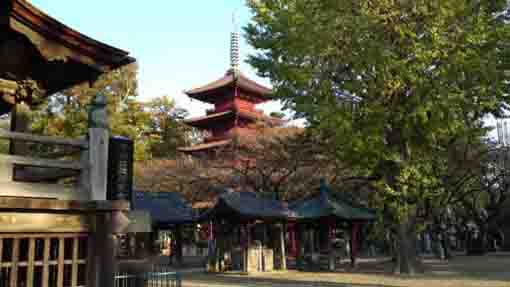
Goju-no-to (the five-story pagoda) , the nationally important cultural property
It was built in early Edo period (1622) by request of Koshitsu Honami supported by Maeda Family in Kaga.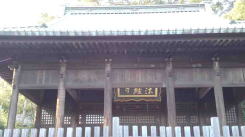
Hokke-do(the nationally important cultural property)
It was built in Kamakura period.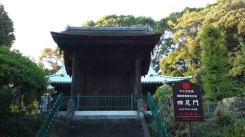
Yon-soku-mon (the nationally important cultural property)
It was moved from Aizen-dou in Kamakura 700 years ago.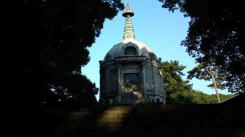
Shougyoden (the treasure hall)
It was designed by the famous architect Chuta Ito, it stores many scripts written by the Founder Nichiren.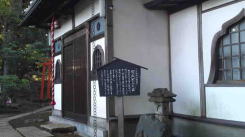
Shogan-jyoujyu-kigan-do (kiyomasa-kou-dai-zingi-do)
It enshrines Kiyomasa Kato, one of the most famous daimyo in Sengoku period.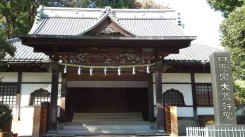
Aragyodo Hall (the hall where Buddhiist priests practice for 100 days in winter severly)
From Nov 1 to Feb 10, hundreds of Buddhist priests practice severly every year.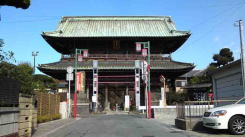
The Nio-mon Gate (The Deva Gate)
The henguku hunged in front of the gate was written by Koetsu Honami, famous artist in Momoyama Period.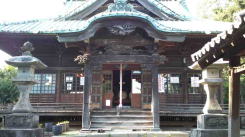
Setsu-do
It was built for worshipping Jurasetsunyo, Kishibozin, Daikokusama.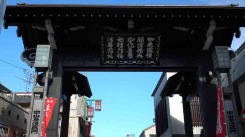
Black Gate(a tangible cultural asset by Ichikawa City)
It is also called Sou-mon (the main gate).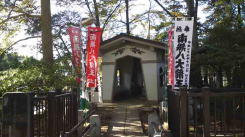
Hachidai-ryuo-do
The founder Nichiren built the small shrine to dedicate the dragon god to pray for rain.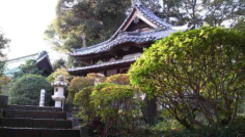
Ugazin-do
It enshrins Ugazin who is the guardian deity of Hokekyou-ji Temple.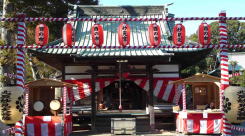
Myouken-do
It dedicates Hokushin Myouken Star that the Chiba Family deeply believed in , Hokekyoji traditionally succeeds. In November, Tori-no-ich is held in the site to dedicate the star.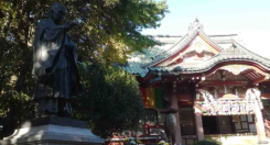
Oku-no-in (the first place where Nichren had preached at)
The founder Nichiren preached first time at the Toki's castle called Wkakamiya Yakata. And Toki built a temple 'Hokkeji', it is the origin of Oku no In.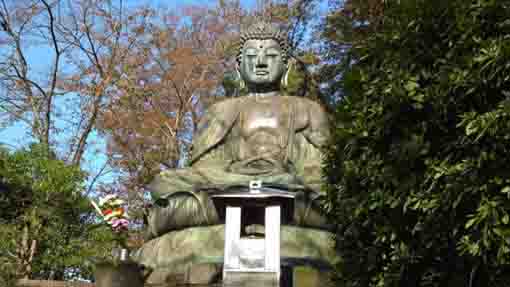
The Great Buddha(The Seated Statue of Shaka Nyorai)
It was built in 1719 by famous caster Ota Suruga-no-kami in Kanda. It is the bigest great Buddha in Chiba prefecture.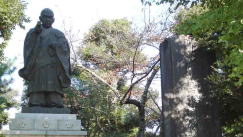
The statue of Nichijo and Naki-Icho
Nichijo was the first abbot of Nakayama Hokekyoji Temple and Naki Icho is a gingko tree having a sad legend.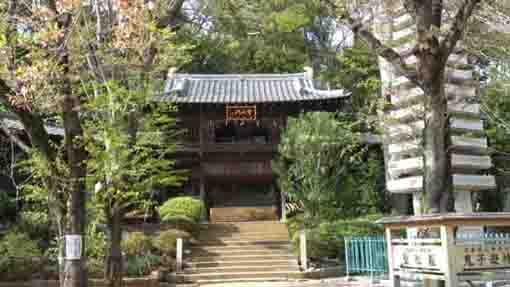
Kagami-ike-ato (the remain of the pond like a mirror), Emado hall, Hoden-mon gate, Ryuenkyo bridge
There are some other landmarks in Nakayama Hokekyoji Temple.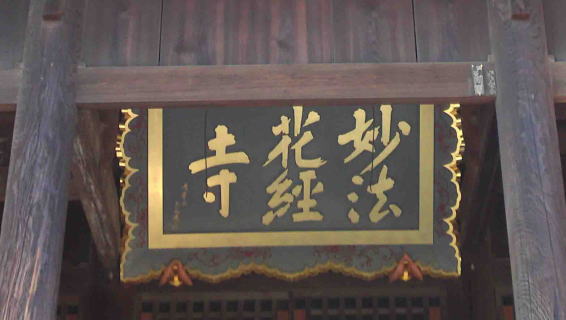
The artists, poets and writers related to Hokekyoji Temple
Koetsu Honami specially remained his calligraphy in Hokekyo-ji Temple, and Shiki Masaoka, Kafu Nagai discribed it well.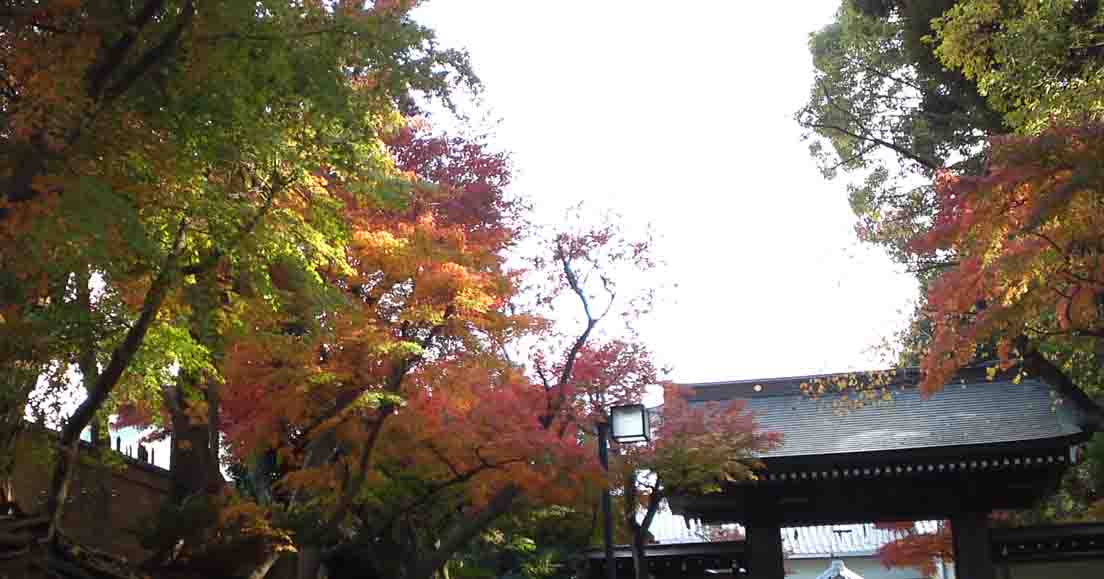
The Tacchu Temples and the Branch Temples in and around Nakayama Hokekyoji Temple
Some tacchue temples are introduced in this page.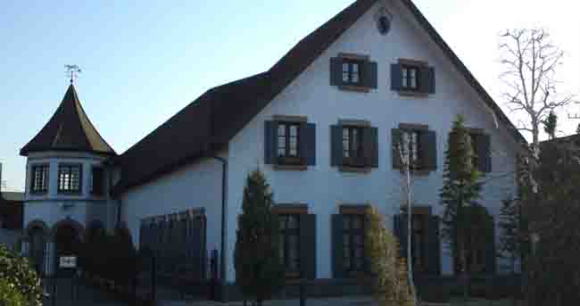
A Walk on the the area around Nakayama Hokekyoji Temple
There are some noted spots, Kaii Higashiyama Memorial Hall and so on, near Hokekyoji.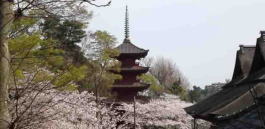
The Popular Viewing Sakura Spot / Nakayama Hokekyoji Temple
Cherry blossoms in Hokekyoji are amazingly wonderful.- 広告 Advertisement -
